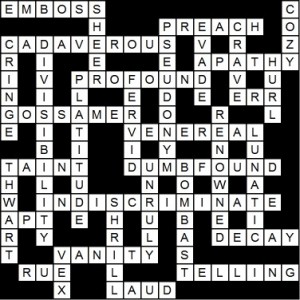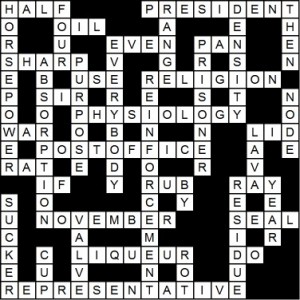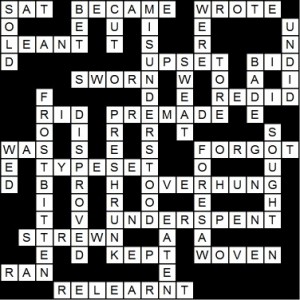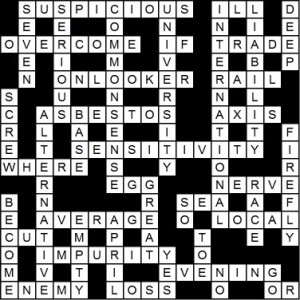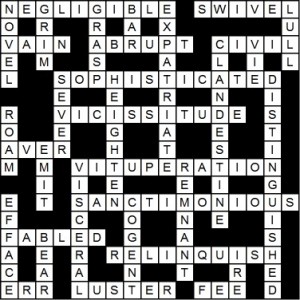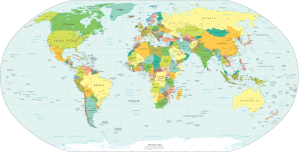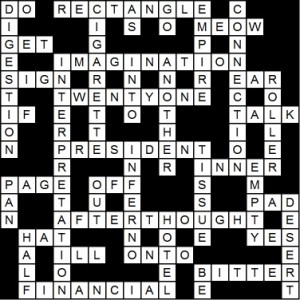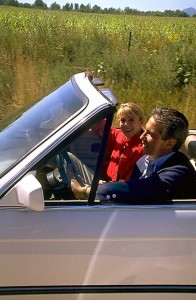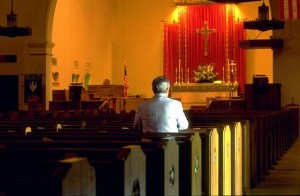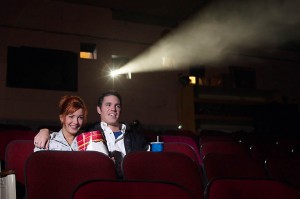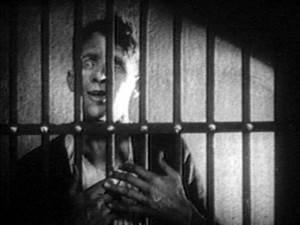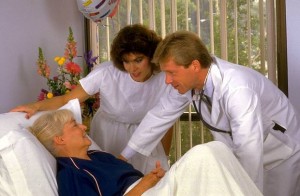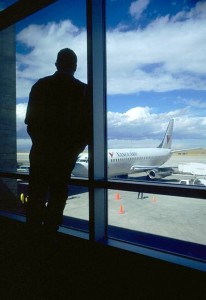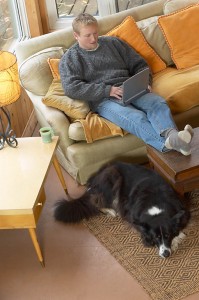Blog Archives
Crossword – TOEFL 14 (Solution)
Grammar Basics: Unit 74 – The ~ (place name) (Solution)
Exercise. Answer the geography questions, using names from the box. Use “the” if necessary.
Example:
______ is the capital of Denmark. (Copenhagen) ==> Copenhagen is the capital of Denmark.
______ are near Indonesia. (Philippines) ==> The Philippines are near Indonesia.
1. The Rockies are mountains in North America.
2. The Rhine is a river in Europe.
3. The Gulf of Mexico is on the west coast of Florida.
4. Canada is the largest country in the Americas.
5. The Canary Islands lie off the coast of Africa.
6. Germany is a country in Europe.
7. The Mediterranean is a sea between Europe and Africa.
8. China is a large country in Asia.
9. The United States is Canada’s neighbor.
10. Rome is the capital of Italy.
11. The Atlantic separates North America and Europe.
12. Lima is the capital of Peru.
13. The Amazon is a river in South America.
14. The Pacific is the largest ocean.
15. Angola is a country in Africa.
Exercise. Look at the following sentences. Insert “the” if it is needed. If “the” is not necessary, write “OK.”
Example:
The sun rises in ______ east and sets in ______ west. ==> The sun rises in the east and sets in the west.
Mr. Smith’s shop is on ______ Main Street. ==> OK.
1. Can you tell me how to get to the Guggenheim Museum?
2. Do you know if the Showtime Theater is open on Christmas?
3. The National Theatre is also known as “Theatre of the Presidents.”
4. Mark Twain wrote a memoir called Life on the Mississippi.
5. Once a year, Aunt Karen went shopping on Park Avenue. ==> OK.
6. The University of Chicago is not too far from the Museum of Science and Industry.
7. The twins had their picture taken in front of the Lincoln Memorial.
8. I think this train will take you to Union Station. ==> OK.
9. France gave the Statue of Liberty to the United States in commemoration of America’s Declaration of Independence.
10. It took the United States a decade to complete the Panama Canal.
11. The St. Lawrence Seaway allows boats to travel from the Great Lakes to the Atlantic Ocean.
12. People visit Central Park in New York to relax and enjoy some green space. ==> OK.
13. There are over 1700 islands in the Florida Keys.
14. The Chicago White Sox no longer play in Comiskey Park. ==> OK.
15. Many people were put into the Tower of London to await execution.
16. The stone statues on Easter Island are over 500 years old. ==> OK.
17. The Erie Canal was officially opened in 1825.
18. Princeton University was originally established to train men for Christian ministry. ==> OK.
19. The Andes are the longest continental mountain range in the world.
20. Old Faithful is a popular attraction at Yosemite National Park in Wyoming. ==> OK.
Grammar Basics: Unit 73 – I like ~, I hate ~ (Solution)
Exercise. Look at the following sentences. Insert “the” if it is needed. If “the” is not necessary, write “OK.”
Example:
I hope we have ______ good weather for our picnic. ==> OK.
Did you feed ______ dogs last night? ==> Did you feed the dogs last night?
1. All’s fair in love and war. ==> OK.
2. By the time everyone was seated, the tea had grown cold.
3. Let me know when the water comes to a boil.
4. Mr. Brown encourages his children to study music. ==> OK.
5. Jack has mastered the art of cake decorating.
6. Do you think fish would make good pets? ==> OK.
7. I think the milk has turned sour.
8. Mary likes the sound of rain on the roof.
9. Sometimes life is not fair. ==> OK.
10. Father gave Mother flowers for Valentine’s Day. ==> OK.
11. Some people think it’s wrong to wear fur. ==> OK.
12. Sam spent three years studying the history of the northern fishing villages.
13. Older people are often uncomfortable using computers. ==> OK.
14. How long have you been studying English? ==> OK.
15. Wear a smock – working with paint can be messy. ==> OK.
16. Sand is used to make glass. ==> OK.
17. As soon as the oven is hot enough, put the bread in to bake.
18. Who introduced silk to Europe? ==> OK.
Writing Assignment: Driving a Car (Solution)
1. What are the people in the picture doing?
The people are going for a drive in the car.
2. What do you call a car without a roof?
A car without a roof is called a convertible.
3. What kind of road do you suppose the car is driving on?
It looks like the car is driving on a country road, or perhaps on an interstate or expressway.
4. What do you call the person who controls the car?
The person who controls the car is called the driver.
5. What do you call a person who is not controlling the car?
Someone who is not controlling the car is called a passenger.
6. What is a driver’s license?
A driver’s license is a document which signifies that a person enjoys the legal privilege of being able to drive a car.
7. When you prepare to drive a car somewhere, what sort of things do you have to do?
When you prepare to drive a car, there are several things that you have to do. You have to put on your seatbelt, adjust the seat and mirrors if necessary, turn on the ignition, and put the car in gear. If you are parked in a driveway, you might have to back up the car in order to get it onto the road.
8. What does a seatbelt do?
A seatbelt restrains the driver and/or passengers in the event of a car crash.
9. What does the driver use mirrors for?
The driver uses the mirrors to view the traffic behind him, and to see where he is going if he has to drive the car in reverse.
10. Why is the dashboard important to the driver?
The dashboard is important to the driver because he is able to view the speedometer, the gas gauge, and other important instruments that let him know how the car is currently functioning.
11. What does the speedometer do?
The speedometer tells the driver how fast the car is going. It also usually tells the total number of miles the car has been driven.
12. How does the driver make the car go?
The driver makes the car go by putting the car in gear and stepping on the gas pedal (accelerator).
13. How does the driver steer the car?
The driver steers the car with the steering wheel.
14. What do wipers do?
The wipers clean the windshield of rain and snow, keeping it clear so the driver can see the road.
15. What do turn signals do?
Turn signals indicate to other drivers that the car is going to turn.
16. What does the driver use cruise control for?
The driver uses cruise control to keep the car at a constant speed, usually while driving on an expressway or interstate.
17. What part of the car is under the hood?
The engine is under the hood.
18. What is the trunk of a car?
The trunk of the car is where luggage and other parcels can be put. Often, a spare tire or other emergency equipment is also kept there.
19. Where is the fuel for a car stored?
The fuel for a car is stored in the car’s gas tank.
20. What sorts of road signs must a driver pay attention to?
The driver needs to pay attention to stop signs, speed limit signs, no passing zone signs, traffic lights, and direction signs.
Paragraph: Driving a Car
Have you ever driven a car? Are you learning how to drive? Do you like to drive? Write a brief paragraph about your driving experiences.
I remember when I got my driver’s license. I had turned sixteen several weeks earlier, but I decided to wait for several reasons. For one thing, all the cars in the driver’s ed course at school had automatic transmission, but all our family cars had manual transmission, and I was not especially confident in driving a stick shift. I felt I needed the extra time to become more proficient. Also, my birthday was in the winter, and I wasn’t too keen on trying to take my driver’s test on snowy roads.
So, one day during spring break, my mother took me to the driver’s license facility to get my driver’s license. I was very nervous, and my nervousness was made all the worse because I had to wait until a driver’s license examiner was available. At long last my turn came, and the examiner came out with me to my car. He observed me as I came out of the parking lot, and instructed me to turn onto the main road. I drove down the road, which had a stop sign at the end. I figured that the examiner would be picky about coming to a full stop, so I made sure that I completely stopped the car at the stop line.
However, when I went to make a turn at the stop sign, I had trouble with the car dying on me. I couldn’t understand what was wrong with the car until the examiner asked, “Why don’t you try putting the car into first?” When I had come to the stop sign, I had already gotten the car into third gear, and in my nervousness I completely forgot to go back to first gear after having stopped. I thought for sure the examiner was going to flunk me, but he must have had pity on me or something, because he passed me nonetheless. I was so glad to have the ordeal of a driving test behind me!
Grammar Basics: Unit 72 – Articles: go to work, go home, go to the movies (Solution)
Exercise. Look at the pictures and complete the following sentences. Use “the” if necessary.
Example:
Exercise. Choose words from the list to complete the following sentences. Use “the” if necessary.
Example:
Harry is studying chemistry in ______. (college) ==> Harry is studying chemistry in college.
1. Before we went on vacation, Father went to the bank to pick up some traveler’s checks.
2. Greg has to go to the doctor for a sports physical.
3. We’re going to have a company picnic at work this summer.
4. Instead of a big birthday party, Joan wanted to go to the movies with a few good friends.
5. Aren’t you going home? It’s nearly midnight.
6. Jack has the flu, so Mother told him to stay in bed and rest.
7. You’ll have to go to the post office to mail that package.
8. Martha had to go to school to pick up Jeremy. The school nurse said he’s come down with the chicken pox.
9. The punishment for that crime is five years in prison.
10. It’s about time you went to the dentist and had him take a look at that toothache.
Exercise. Complete the sentences, using the verb “go.” Use “the” if necessary.
Example:
If you want to study medicine, you ______. ==> If you want to study medicine, you go to college.
1. If you don’t want to stay at a party, you go home.
2. If you have appendicitis, you go to the hospital.
3. If you need to take a flight, you go to the airport.
4. If you are sick, you go to the doctor.
5. If you need to catch a train, you go to the station.
6. If you want to see a film, you go to the movies.
7. If you want to worship, you go to church.
8. If you have a toothache, you go to the dentist.
9. If you want to see a play, you go to the theater.
10. If you commit a crime, you go to jail.
11. If you have a job, you go to work.
12. If you are tired, you go to bed.
13. If you are a child, you go to school.
14. If you want to get an advanced degree, you go to college.
15. If you want to mail a letter, you go to the post office.
16. If you need some cash, you go to the bank.
Exercise. For the following sentences, write “the” where necessary. If the sentence needs no correction, write “OK.”
Example:
John went to movies on Saturday. ==> John went to the movies on Saturday.
Father served Mother with breakfast in bed. ==> OK.
1. Jack and Jill were married in church. ==> OK.
2. Grandmother took Grandfather to the doctor for his blood test.
3. The children are putting on a Thanksgiving play at school next week. ==> OK.
4. Helen has to go to the dentist for her six-month checkup.
5. Could you take this parcel to the post office for me?
6. Which bus goes to the airport?
7. I’ll go to the station and pick you up when your train comes in. Just give me a call.
8. Are you still in bed? It’s nearly 10 a.m. ==> OK.
9. I think I hear your mother calling you. You’d better go home now. ==> OK.
10. Uncle Steve broke his arm and had to go to the hospital.
11. Do you want to go out for a drink when you finish work? ==> OK.
12. We went to the theater for the opening of Julius’ new play.
13. I didn’t know that Uncle Clyde spent time in prison. ==> OK.
14. We go to the bank every payday and get some cash.
15. I don’t go to the movies much anymore.
16. George studied hard in college. ==> OK.

